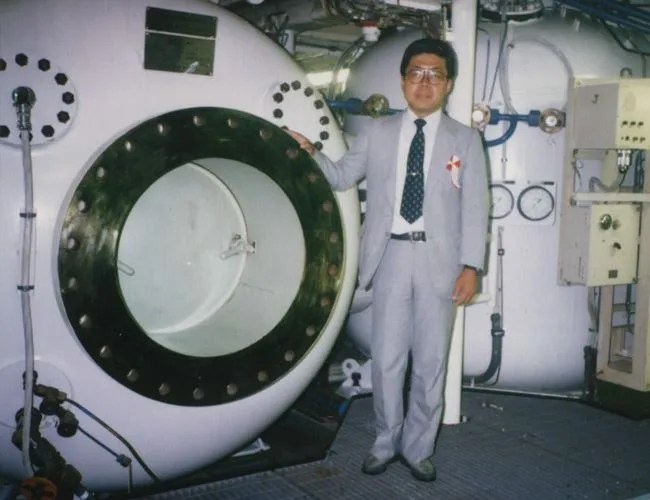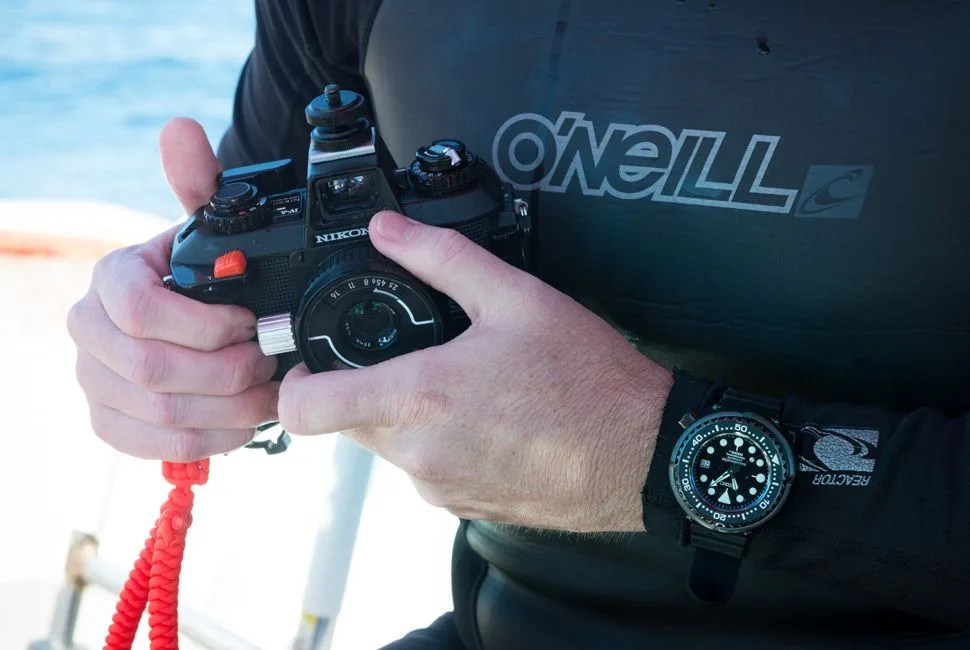Welcome to Watches You Should Know, a biweekly column highlighting important or little-known watches with interesting backstories and unexpected influence. This week: the Seiko “Tuna.”
The work of an offshore commercial diver is about as different from recreational scuba diving as flying a fighter jet is from flying a kite — eight-hour shifts on the ocean floor, 600 feet down, welding pipe followed by days living inside a pressurized habitat breathing a helium gas mixture that makes macho divers sound like Alvin and the Chipmunks. This lifestyle takes its toll on the human body, but it also has an effect on their equipment, including their wristwatches.
The watches designed for reef-combing the Caribbean weren’t cutting it in the harsh environment of the oil fields. In 1968, a letter arrived at Seiko from a commercial diver working in the oil fields off the coast of Japan. The letter described how he was destroying dive watches during his work with great regularity, and he requested a solution. It took seven years, but in 1975, Seiko introduced a watch that addressed all the issues the diver had described and remains to this day perhaps the most capable purpose-built wristwatch of any kind ever made. It was simply called “The Professional Diver’s.”
Ikuo Tokunaga joined Seiko as an engineer in 1970, working from the company’s factory in Suwa on special projects. The professional dive watch project came across his desk, and for the next half decade it became his obsession. Tokunaga isn’t a diver, but he approached the problems described in the diver’s letter with an engineer’s knack for problem solving, tackling each issue separately: a 350m working depth; pitch-black, cold conditions; high-impact work and the helium-saturated living environment which was presenting a unique problem to wristwatches. He responded with over 20 patented innovations.

To provide high pressure resistance capable of standing up to the tremendous depths it would face, the Professional Diver’s was made with a one-piece case, which eliminated the screw-on back entirely and necessitated loading the movement from the top of the watch. The case was made from titanium, the first dive watch to be crafted from the metal, which is notoriously difficult to machine. Titanium provided strength, light weight and resistance to corrosion and magnetism. The gasket used to seal the top-loaded crystal in place was L-shaped, the first of its kind in the industry, which provided a better seal than a deforming round gasket. This helped the watch achieve its rated 600m water resistance, but it also solved another unique problem that plagues commercial divers’ watches: helium intrusion.
Living and working at depth requires divers to breathe a gas mixture that replaces the nitrogen and much of the oxygen in normal air with helium, to eliminate the narcotic effects of nitrogen and the toxicity of oxygen at high pressure. This causes the voice change in the divers, and it has a more insidious effect on wristwatches: The helium atoms are small enough that they can sneak past the conventional crown, case back and crystal seals to penetrate the watch case.

